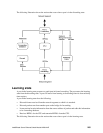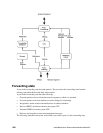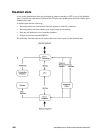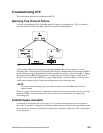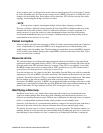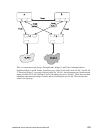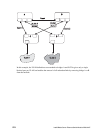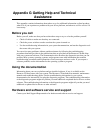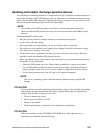272 Intel® Blade Server Ethernet Switch Module IXM5414E
problem, if sufficient time is available. Connectivity will be restored immediately after disabling a
data loop.
Avoiding network problems
To help your network operate more efficiently, you can avoid or minimize network problems, as
described in this section.
• Know where the root is located.
Although the STP can elect a root bridge, a well-designed network has an identifiable root for
each VLAN. Careful setup of the STP parameters results in the selection of this best bridge as
the root for each VLAN. Redundant links can then be built into the network. STP is well-suited
to maintaining connectivity in the event of a device failure or removal, but is poorly suited to
designing networks.
• Know which links are redundant.
Organize the redundant links and tune the port cost parameters of STP to force those ports into
the discarding state.
For each VLAN, know which ports should be discarding in a stable network. A network
illustration that shows each physical loop in the network and which ports break which loops is
extremely helpful.
• Minimize the number of ports in the discarding state.
A single discarding port changing to the forwarding state at an inappropriate time can cause a
large part of a network to fail. Limiting the number of blocked ports helps to limit the risk of an
inappropriate change.




